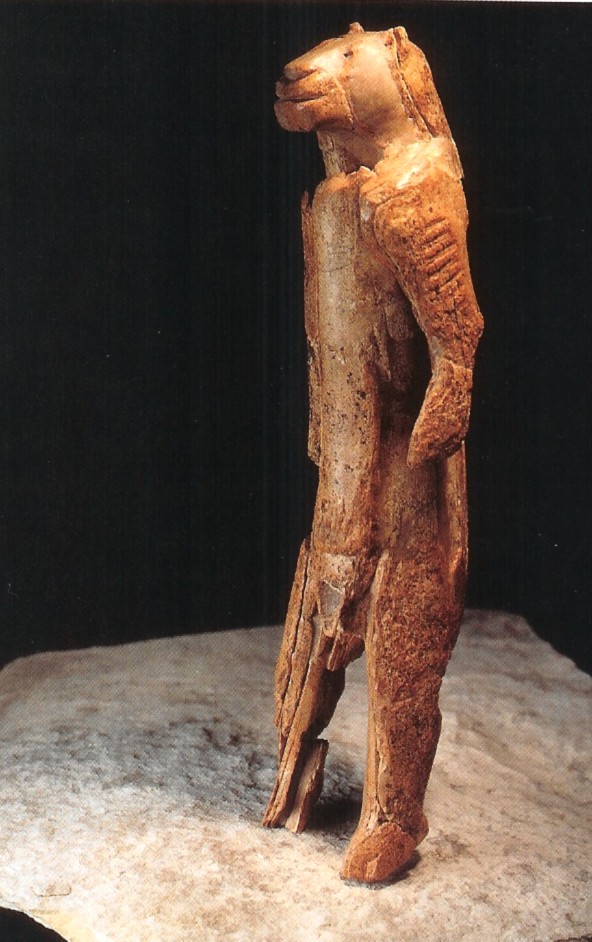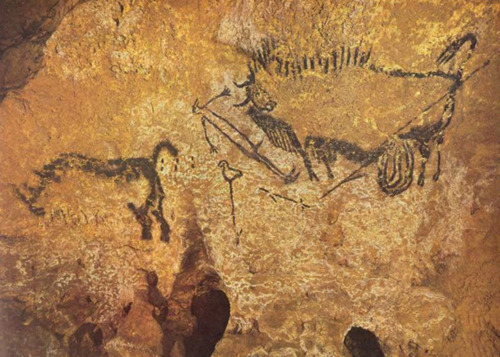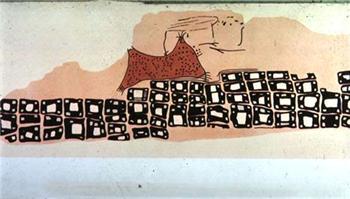Cards In This Set
| Front | Back |
|
Paleothic
|
30,000-8000 B.CE
|
 |
Human with a feline head, from Hohlenstein-Stadel, Germany, 30,000 Bce., Mammoth made from Ivory.
One of the oldest known sculptures, |
|
Pic
|
Name- Venus of Willendorf(Nude Woman),
Location- Willendorf, Austria. Date-25,000 BCE, Material-made from Limestone. explanation-The anatomical exxagerations, are typical for Paleothic art of women, who represented fertility, whose child-bearing capabilities ensured the survival of the species. |
 |
Name- Spotted horses and negative handprints
Location- Perch-Merle, France Date-20,000 Material- wall painting in a cave explanation- The hands might be signatures of community members or of individual painters. |
 |
Name- Rhinocerous, wounded man, and disembled bison
Location- Lascaux, France Date-15,000 BCE Material-painting in the well explanation-Earliest form of narrative explanation, man is more abstract, bison is more naturalistic, and bigger than man, so more important. |
|
Neothic Art
|
8000-2300 BCE
|
 |
Name- Landscape with Volcanic eruption
Location- Catal,Huyuk, Turkey level 7 Date-6000 Bce Material- watecolor, copy explanation-Oldest mural paintings, first known landscape painting neither human not animals appear, may have represented the settlement during a volcanic eruption. |
 |
Name- Deer Hunt
Location- Catal Huyuk, Turkey, Level 3 Date-4000 BCE Material- wall painting explanation-depicts humans as a composite of frontal and profal views, the most descriptive picture of the shape of the human body, this became the format of the millennia. |
|
Pic
|
Name- Aerial View of Stonehenge
Location- Salisbury Plain, England Date-2000 BCE Material-stone explanation- probably functioned as a solar calender, the sun rises over its heel stone. tremendous engineering skills for its time. |
|
Mesopotamia- Sumer
3500-2332 |
Name- White Temple and ziggurat
Location- Urak,Iraq Date-3000 Bce Material- mud bricks explanation- Temple plaforms, known as ziggurats, central roles of the gods in their daily life. |
|
Pic
|
Name- Warka Vase, Presentations of offerings to Innana
Location- Uruk, Iraq Date-3000 Bce Material-Alabaster explanation- Sumerian Narrative Art, divided the tail stone vase reliefs into registers. |
|
Pic
|
Name- Statuettes of two worshippers
Location- Square temple,Iraq Date-3000 BCE Material- black limestone explanation-oversized eyes symbolize the weakness of these worshippers offering prayers to the diety, the beakers, were used to pour libations for the gods. |
|
Pic
|
Name- War side of Standard of Ur
Location- Ur,Iraq Date-3000 Material-wood, lapis lazuli, shell and limestone. explanation- depicts a battlefield victory in three registers. The size of the figures depend on their importance is society. |
|
Akkadian Art
2332-2150 |
Name- Victory stele of Naram-sin
Location- Susa,Iran Date-2000 BCE Material- pink sandstone explanation- To commemrate his conquest of the Lullubi, set up this stele showing him lead his army up to a mountain, see him climbling over the army (showing his importance) |
|
Neo Sumerian and Babylonian
|
Name- Stele with the laws of Hammurabi
Location- Susa,Iran Date-2000 BCE Material-basalt explanation-records his laws, the sun God, is giving the king the symbols of his authority to govern and judge. |



